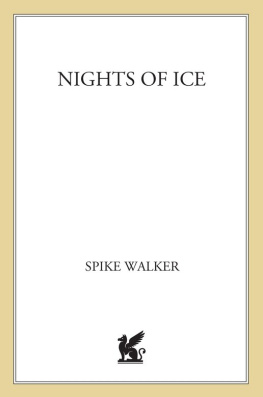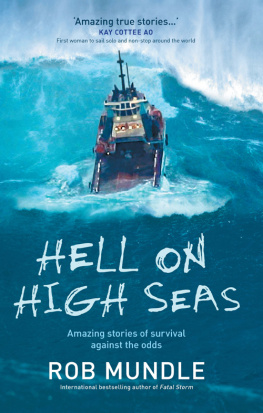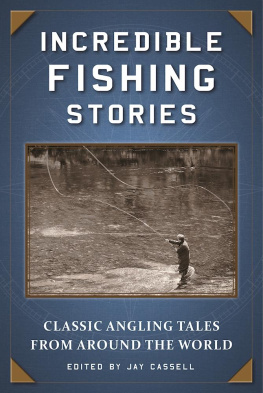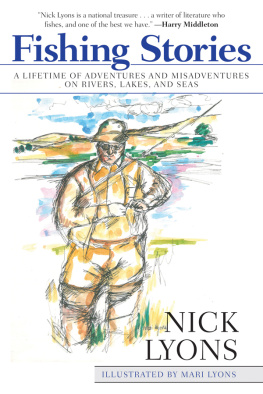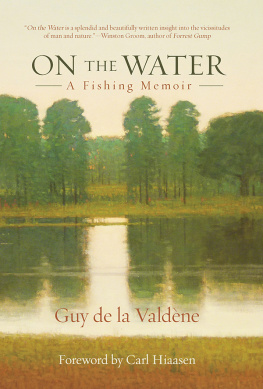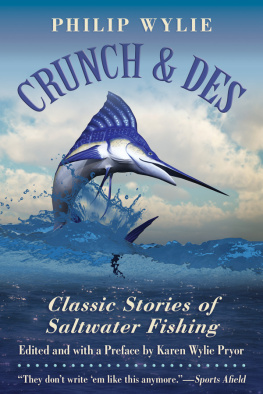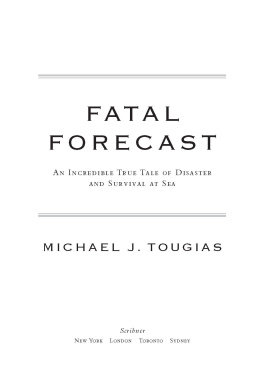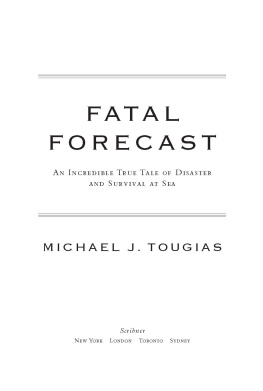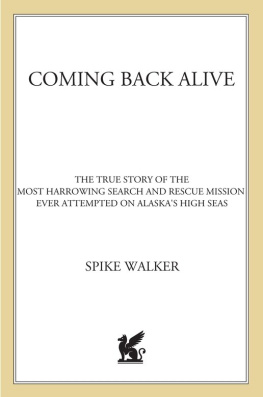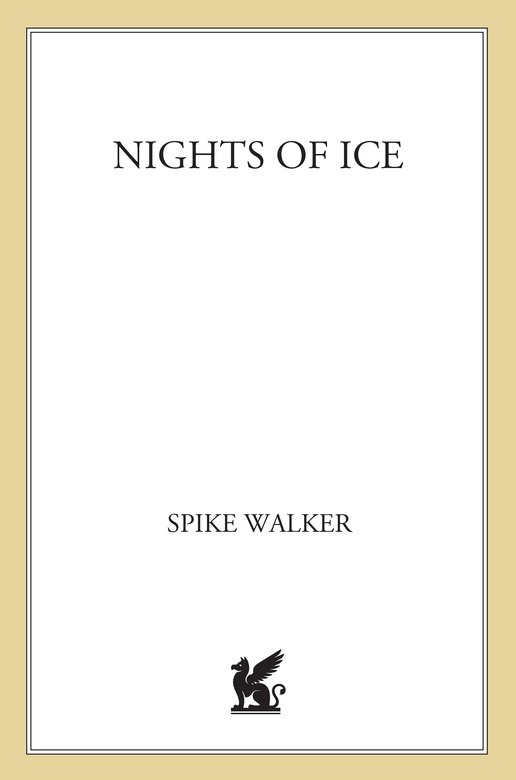I would like to express my deep sense of personal gratitude to the scores of people who have contributed, in one form or another, to the creation of this book.
Foremost, I wish to thank Lynette Bishop for her encouragement and graciousness; and John M.G. Graham for his unwavering friendship and support.
I would also like to thank John Winther and Bart Eaton for providing several summers of work aboard the one-hundred-foot-long salmon packer Theresa Marie, and Conrad Johnson, skipper of the notorious ninety-foot Nautilus. I will always remember the long, invigorating months of work and camaraderie amid Alaskas awesome beauty as endless stretches of her pristine wilderness passed by.
The logistics involved in packing five million pounds of salmon from far out on the fishing grounds in southeast Alaska to the Trident Seafoods cannery dock back in port left mecontentedly exhausted, and, in the end, certain in the knowledge that my youth was gone forever.
But those months provided the crucial funds necessary to allow me to continue the research for this book and to see its writing on to completion.
I am deeply indebted to the many commercial fishermen who openly shared their experiences with me, stories filled with adventure and bravery and panic, of impossible rescues and, all too often, death.
The names of their fishing vessels were: the Amber Dawn, the Alaska Star, the Angela Marie, Bobs Boat , the Cloverleaf, the Gunmar, the Harder, the Margun, the Marysville, the Mia Dawn, the Neakanie, the Polar Star, the Rebecca, the Rondys, the Saint Patrick, the Ten Bears, the Tidings, and the M/V Wolstadt.
In Juneau, Alaska, I would like to thank Debbie Schiedler Aranda, Greg Backman (USCG), David Beachem (USCG), Father Ron Dunfey, Shawn Elderidge, Mark Guillory (USCG), and Robert Newton for their assistance.
In Ketchikan, I wish to thank Marie Van Aarn, Pete Van Aarn, Shirley MacAllister, Tom and Dean Hordtvedt, David Jack Huffin, Mik Sharp, and Danny Wall.
In Kodiak, I wish to thank Michael Barnes (USCG), Brian Blue (USCG), Lt. Larry Cheek (USCG), Nancy Freeman, Lt. Com. Richard Gaines (USCG), Thomas Goldston, Lt. Bill Gottschalk (USCG), Vern and Debbie Hall, Dr. James Halter, Joe and Mary Ellen Harlan, William De Hill Jr., Bruce Hinman, Gene Le Doux, Lt. Bob Lockman, Lynn Loftquist, Gary and Debbie Marlar, Shannon McCorkle, Captain Jimmy Ng (USCG) and his wife Joy, Dr. Martin Nimeroff (USCG), Hank Pennington, Bert Parker Jr., Pat and Dina Pikus, George Pikus, George Timpke, Chris Rosenthal, Paul Vines, and Wade Watkins.
In Petersburg, I would like to thank Norman and Mary Armin, Bill Beal, John Breezeman, Charlie Christiansen, Officer Rick Carter, Alann Erickson, Haftor Gjerde, Erik Kegal, Kurt Kivisto, Colyn and Carleen Lyons, Colt Lyons, Natacha Lyons, Myron Lyons, Bill and Carol Stedman, Mike Tolson, John and Bert Winther, Wayne Winther, and Matt the cook.
And I would also be remiss if I did not mention each and every one of the following people. Some are living; some are dead.
In alphabetical order, they are: Amron, Wayne Worm Baker, Ethel Bangert, Jim Batlien, Larry and Sharon Bennett, Ethan Bohannon, Frank Bohannon, Debra Brushafer, David and Jill Capri, Wink Cissel, Dale Dickenson, Jan and Denny Dimmitt, Mike Doland, Richard Fong, Sandy Fong, Alex and Laura Fong, Perry Fiscus, Rob Frazier, Bud Gardner, Gary Garland, David Graham, David and Nancy Green, Cornelius Green, Joyce and Wilburn Hall, Kim Handland, Jeff Hinshaw, Brian Hutchins, Mark and Martha Hutton, Gunner Ilhudso, Sr., Gunner Ilhudso, Jr., James Jobe, Tom Kaupenin, Robert Kidd, Gary Knudsen, John Lance, Dick Lawrence, Rick Laws, John and Kathy Ludahl, Mike Machleid, Jerry and Joyce Marston, Craig McKay, Jerry Andrew Miller, Sherri Miller, Larry Murphy, Hilario Nevarez, Ronald Newton, Molly ONeil, Bobby and Rachael Osborne, Wilson Pair, John Pappenheimer, Charles Parlett, Saimi M. Pesio, Don and Alma Quammen, Randy Ryker, Terry Sampson, Vanessa Sandin, Randy and Sue Scott, Art Simonton, David Sparks, Todd Stallings, Clifford Doc Steigell, Velda Sutton, Bob Swanson, Wallace Thomas, Lonnie and Pattie Waddle, Robert B. Walker, Tim and Linda White, Bill and Mary Lou Wiggins, Conrad Johnson and Maggie Wilhelmi, Mel Wisener, Ed Wyman, and Fritz Youra.
Finally, I must thank Barbara Anderson and Cal Morgan,
Finally, I must thank Barbara Anderson and Cal Morgan, the talented editors at St. Martins Press with whom I was blessed to work; Jennifer Starrels, editorial assistant; Lance Rosen, my razor-sharp, Seattle-based attorney; and finally, Bart Eaton, who took the exceptional photo used on the cover of this book.
F or Joe Harlan, captain of the fifty-three-foot crab boat Tidings, and his crew, the 1989 Kodiak Island tanner crab season had been an exceptionally tough one.
From the opening gun, theyd ignored the weather, fishing hard through the merciless cold of an arctic storm. They were working the waters down in the Sitkalidak Island area on the southeast side of Kodiak Island, some eighty nautical miles from the fishing port of Kodiak. But Harlan and his men had been pleased at their luck.
Theyd been pulling gear in the biting cold of the short winter hours of light, grinding through a total of some one hundred crab pots. Harlan had agreed to pay his men a 10 percent per-man crew share that season. In just two weeks theyd boated more than forty thousand pounds of tanner crab. Crew shares had already topped ten thousand dollars per man.
But they had been pounded night and day by wild north-west winds packing chill-factor temperatures of minus fifty degrees and williwaw gusts that made fishing that 1989 season one of the most perilous ever. One crab boat had gone down not far from Harlan and his men, near Chirikof Island. All four of the crewmen had died. So far, only one body had been recovered.
On another crab boat, one deckhand had lost three toes to frostbite when he ignored the water sloshing about in his boots while working on deck. As a fellow crewmate recalls it, Before he knew it was happening, it had already happened.
On the very first day of the season, Joe Harlan had lost one of his own men to frostbite. He had rushed the man into the ancient Aleut village of Old Harbor on the south end of Kodiak Island and hired a bush plane to fly the man to the hospital in Kodiak for treatment. The man had broken no hard-and-fast rules of the sea; he had merely tried to sort crab wearing only cotton glove liners. And he had developed large blisters on the fingertips of both hands, which would keep him out of commission for the rest of the month-long season.
Less than two weeks of fishing later, the tanner crab catch fell off dramatically. And skipper Joe Harlan turned to his crew, hoping to cut his losses and call it a season. Well, you know what youve made so far, he began. And the way the crabbing has been going these last few days, you know what you can expect to make. The way I see it, we have two choices. We can stay out here and scratch away on a five-or-ten-crab-per-pot average until the Alaska Fish and Wildlife Department tells us to quit. Or we can quit burning up our fuel, store our gear away back in Kodiak, and get out of this cold son-of-a-bitchin weather.
After weeks spent working in the single-worst extendedcold spell ever recorded in the Kodiak weather books, the crew of the Tidings did not hesitate. Theyd been successful enough for one season.
Built in 1964 in the shipyards of Seattle, the fishing vessel Tidings had a wheelhouse that was mounted forward on the bow. She was considered one of the nicest boats around at the time because she had a toilet, something that was considered rather extravagant in those earlier, hang it over the side days.

